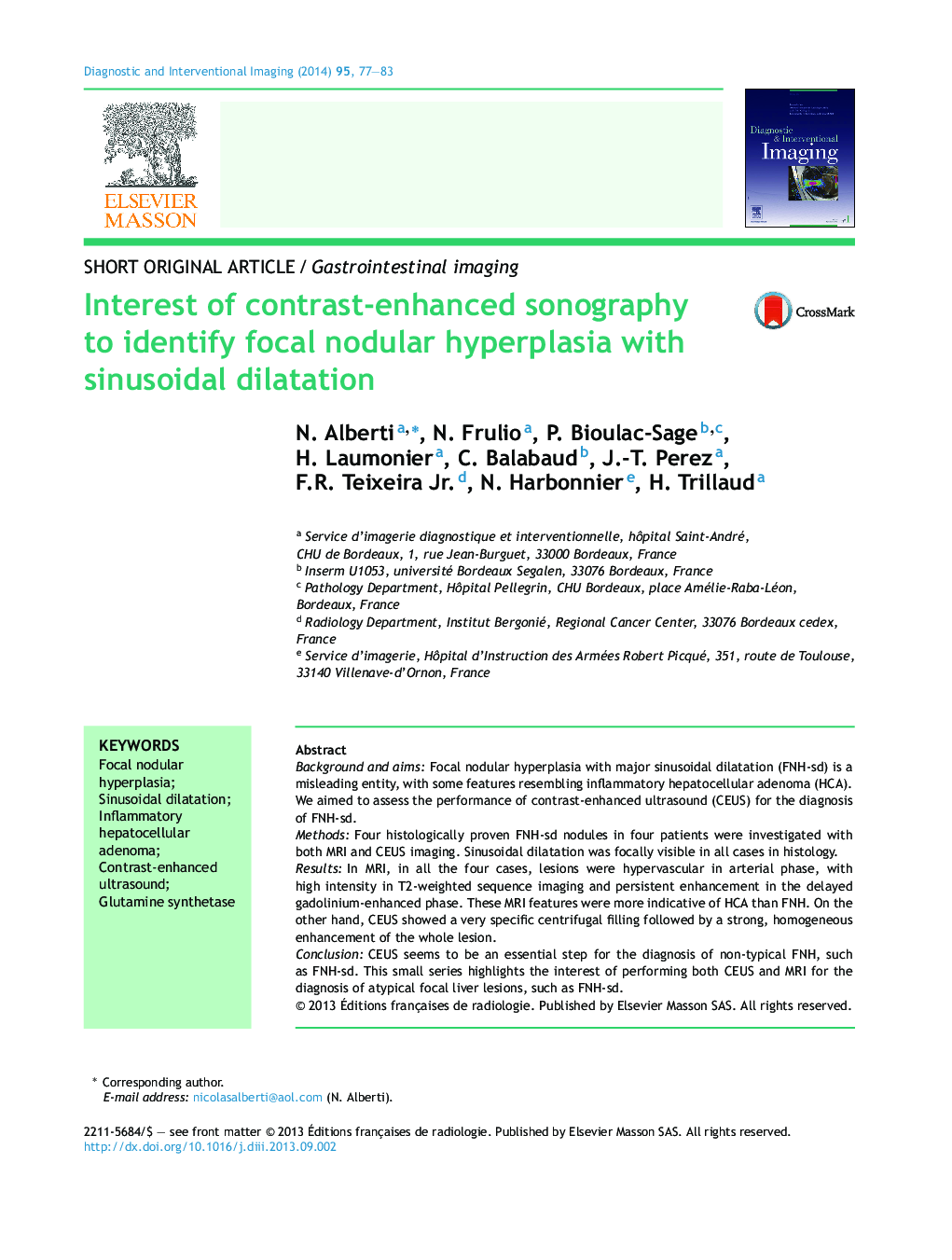| Article ID | Journal | Published Year | Pages | File Type |
|---|---|---|---|---|
| 5881629 | Diagnostic and Interventional Imaging | 2014 | 7 Pages |
Background and aimsFocal nodular hyperplasia with major sinusoidal dilatation (FNH-sd) is a misleading entity, with some features resembling inflammatory hepatocellular adenoma (HCA). We aimed to assess the performance of contrast-enhanced ultrasound (CEUS) for the diagnosis of FNH-sd.MethodsFour histologically proven FNH-sd nodules in four patients were investigated with both MRI and CEUS imaging. Sinusoidal dilatation was focally visible in all cases in histology.ResultsIn MRI, in all the four cases, lesions were hypervascular in arterial phase, with high intensity in T2-weighted sequence imaging and persistent enhancement in the delayed gadolinium-enhanced phase. These MRI features were more indicative of HCA than FNH. On the other hand, CEUS showed a very specific centrifugal filling followed by a strong, homogeneous enhancement of the whole lesion.ConclusionCEUS seems to be an essential step for the diagnosis of non-typical FNH, such as FNH-sd. This small series highlights the interest of performing both CEUS and MRI for the diagnosis of atypical focal liver lesions, such as FNH-sd.
